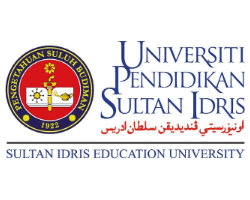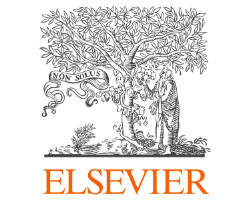Effect of Health Education Regarding Awareness Examination as Early Detection of Breast Cancer on the Knowledge and Attitude of Adolescent Women at the Medan Tuntungan Health Center
Abstract
Breast cancer (Carsionama mamae) is cancer that originates from the glands, ducts and supporting tissues of the breast but does not include the skin of the breast. Breast cancer is the second most common cancer affecting Indonesian women and is the number one killer of women in the world (Mangan, 2005). The purpose of this study was to find the effect of education between health education regarding BSE examination and the knowledge and attitudes of young women at the Medan Tuntungan Health Center in 2020. The research method used was quasi-experimental. The population in this study were all young women who lived in the area of the Medan Tuntungan Health Center. Sampling technique with a total sampling of 34 people. The results of statistical tests using the Wilcoxon test, obtained p value = 0.025 (p value <0.05) meaning Ho is rejected, which means that there is an influence between the Health Department on adolescent attitudes about BSE examinations. It is hoped that adolescents can increase their knowledge about BSE examinations and be more concerned with their own health conditions so that they can detect cancer in themselves early.
Downloads
References
S. Solikhah, R. Matahari, F. P. Utami, L. Handayani and T. A. Marwati, “Breast cancer stigma among Indonesian women: a case study of breast cancer patients,” BMC women's health, vol. 20, no. 1, pp. 1-5, 2020.
T. M. Fahrudin, I. Syarif and A. R. Barakbah, “The Determinant Factor of Breast Cancer on Medical Oncology Using Feature Selection Based Clustering,” In 2016 International Conference on Knowledge Creation and Intelligent Computing (KCIC), 2016, pp. 232-239.
T. Sukartinia, L. C. Dewib, H. E. Nihayatic, N. R. Lailid, I. K. T. Nandakae and A. Nugrahenif, “The Lived Experience of Women with Breast Cancer,” International Journal of Innovation, Creativity and Change, vol. 13, no. 6, pp. 249-262, 2020.
S. Pengpid and K. Peltzer, “Prevalence and Risk Factors for Cervical and Breast Cancer Screening Among Women in The General Population in Indonesia,” Gender and Behaviour, vol. 16, no. 3, pp. 11994-12003, 2018.
S. K. Wulandari, Y. Hermayanti, A. Yamin and F. Efendi, “Family Process with Breast Cancer Patient in Indonesia,” Ners, vol. 2, no. 2, 2017.
I. Mastikana, F. H. J. Laga and A. A. Adhyatma, “The Relationship of Class II Adolescent Girls Knowledge about Breast Cancer with Attitudes to Conduct Clinical Breast Examinations (CBE) at SMA N 8 Batam City,” International Journal of Social Science, vol. 1, no. 2, pp. 49-54, 2021.
Ministry of Health, “Latest global cancer data: Cancer burden rises to 18.1 million new cases and 9.6 million cancer deaths in 2018,” World Health Organization, 2015.
Riset Kesehatan Dasar “Badan Penelitian dan Pengembangan Kesehatan Kementerian RI tahun 2013,” Riskesdas. [Online] Available: http: //www.depkes.go.id/resources/download /general/Hasil%20Riskesdas%202013.pdf [Accessed: 2013].
R. A. Susidarti, E. Meiyanto, M. Ikawati and N. A. Sida, “Indonesian Micromelum minutum Leave Extracts and Their Cytotoxic Activities toward Breast Cancer Cell Lines,” Journal of Mathematical and Fundamental Sciences, vol. 53, no. 1, 2021.
A. R. Tanjung and E. N. Hadi, “Female Students’perception on Breast Cancer Detection Using Breast Self-Examinantion (SADARI) Method,” In Proceedings of the International Conference on Applied Science and Health, 2018, no. 3, pp. 369-373.
R. Oemiati, E. Rahajeng, and A. Y. Kristanto, Prevalensi Tumor dan Beberapa faktor yang Mempengaruhinya di Indonesia. Badan Penelitiandan Pengembangan Kesehatan, Jakarta 2011.
P. M. Soemitro and A. Hermawan, Blak-blakan kanker payudara. Bandung: Mizan Pustaka, 2012.
Normalisa, “A Genetic-Fuzzy System Algorithm Method for the Breast Cancer Diagnosis Problem,” International Journal of Artificial Intelligence, vol. 8, no. 2, pp. 74-77, 2021.
Desy Meldawati, W. A. Fazraningtyas, and S. Budi, “Correlation between Complication in Pregnancy and Postpartum Depression: Literature Review,” International Journal of Clinical Inventions and Medical Science, vol. 3, no. 1, pp. 31-39, Mar. 2021.
A. P. Pratiwi, M. Riduansyah, and E. E. M. Gaghauna, “The Relationship between Patient Motivations with Dietary Compliance in Patients Diabetes Mellitus at Haruai Health Center,” International Journal of Clinical Inventions and Medical Science, vol. 3, no. 2, pp. 86-92, Sep. 2021.
H. Zambri, U. H. Fetriyah, and P. J. B. Nito, “The Relationship between Birth Weight and Neonatal Sepsis Incidence: Literature Review,” International Journal of Clinical Inventions and Medical Science, vol. 3, no. 2, pp. 93-100, Sep. 2021.
N. P. A. S. Dewi, “Hubungan Tingkat Motivasi Deteksi Dini Kanker Payudara Dengan Tindakan Pemeriksaan Payudara Sendiri (Sadari) Pada Wanita Usia Subur. Denpasar: Poltekkes Denpasar Jurusan Keperawatan, 2020.





















